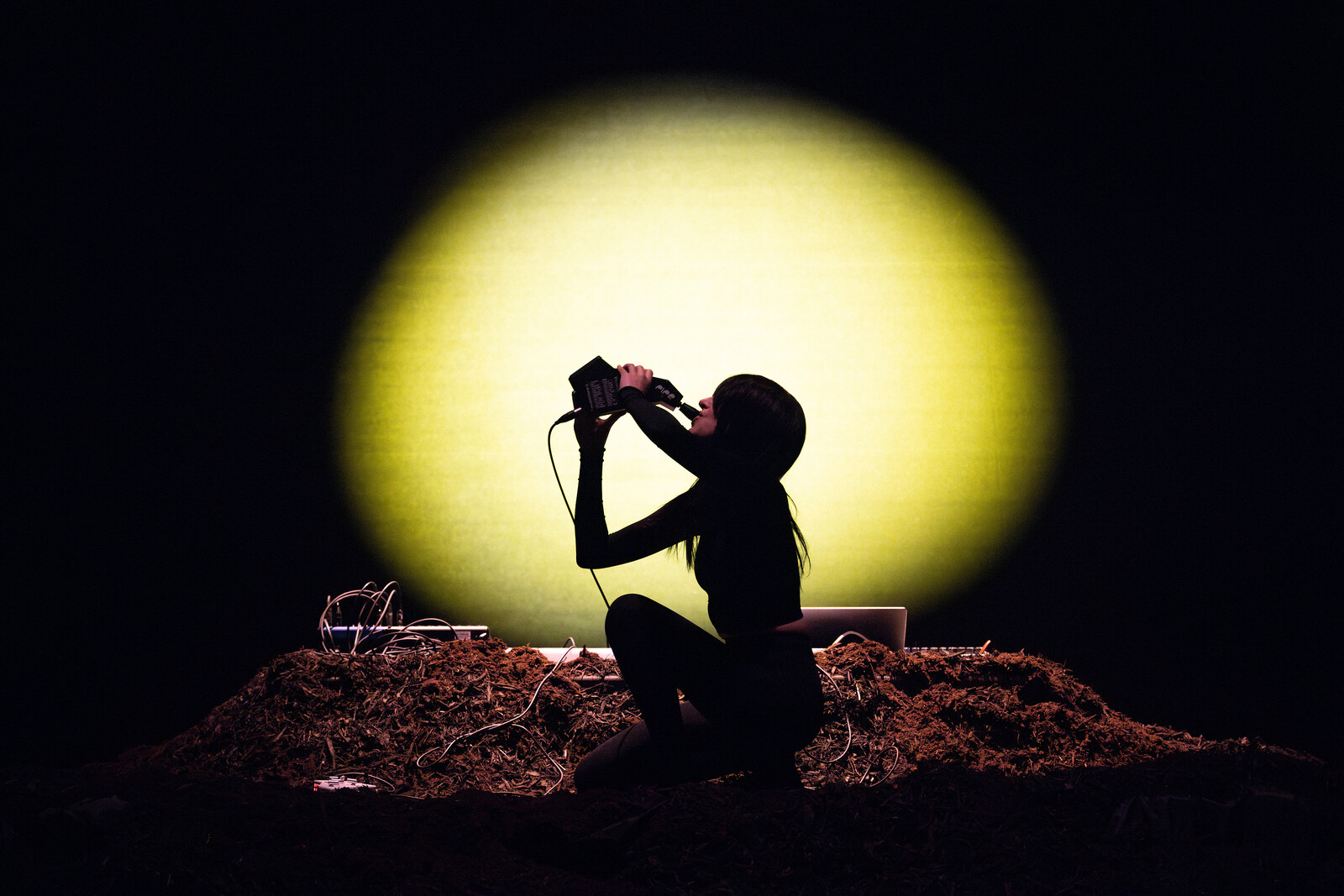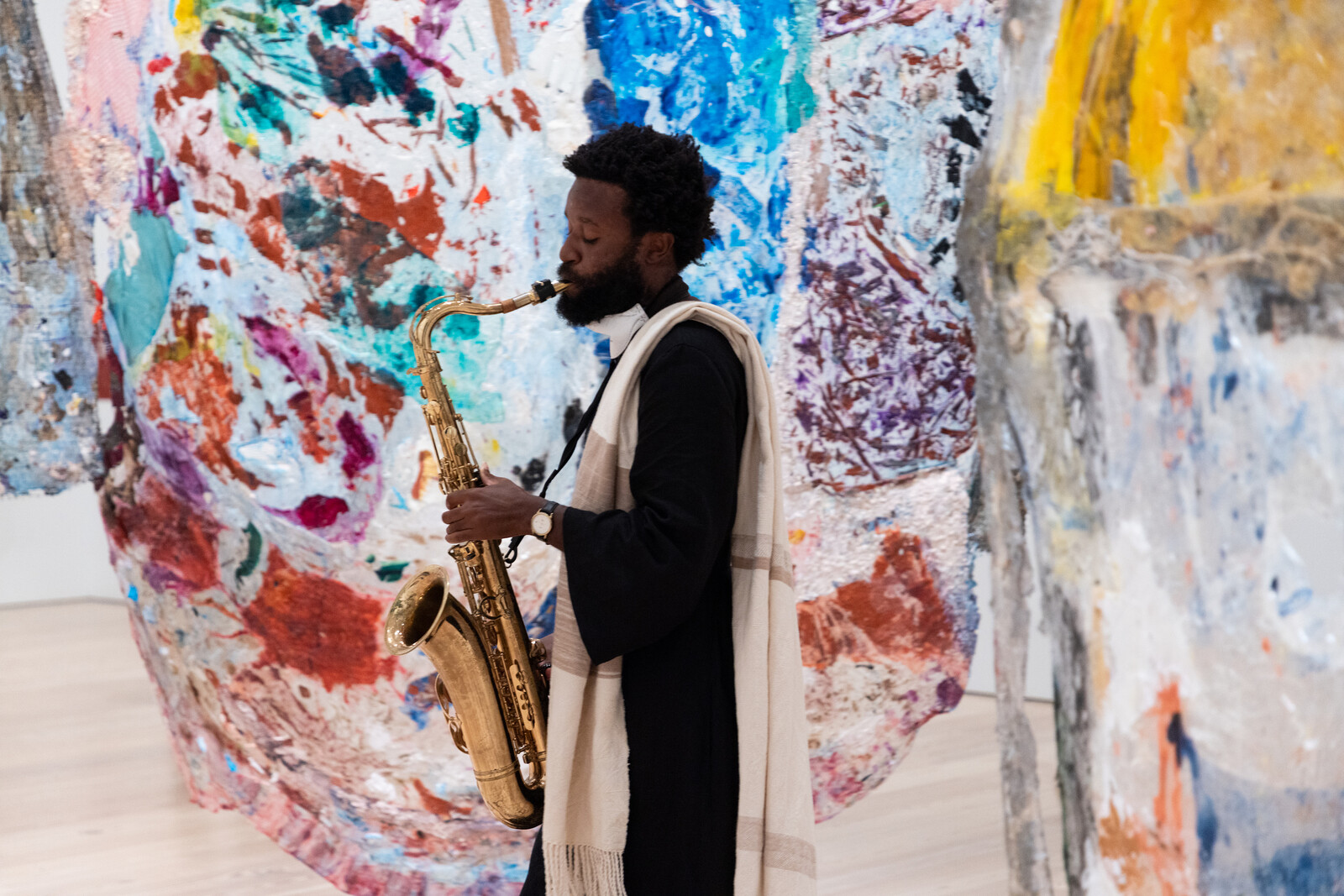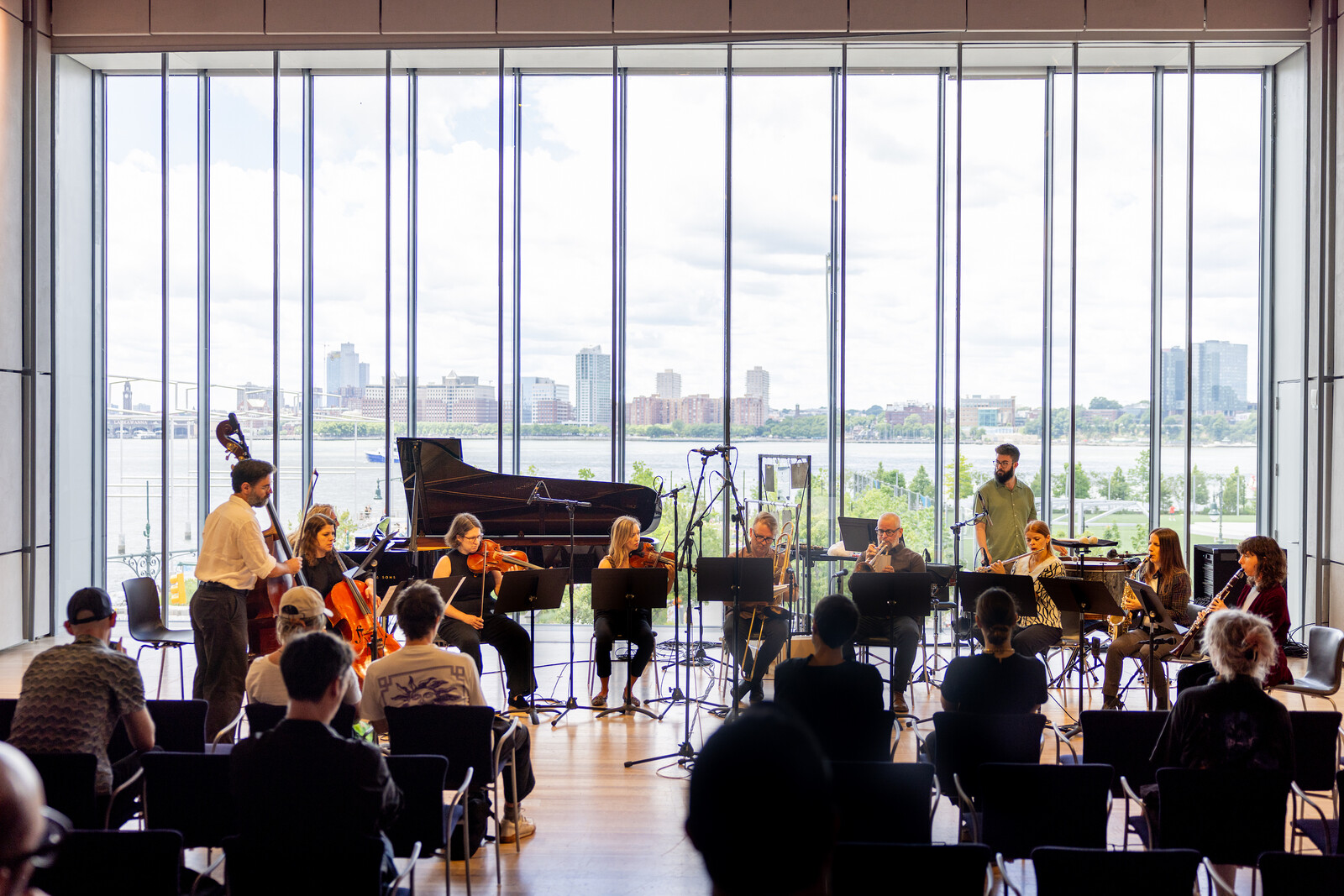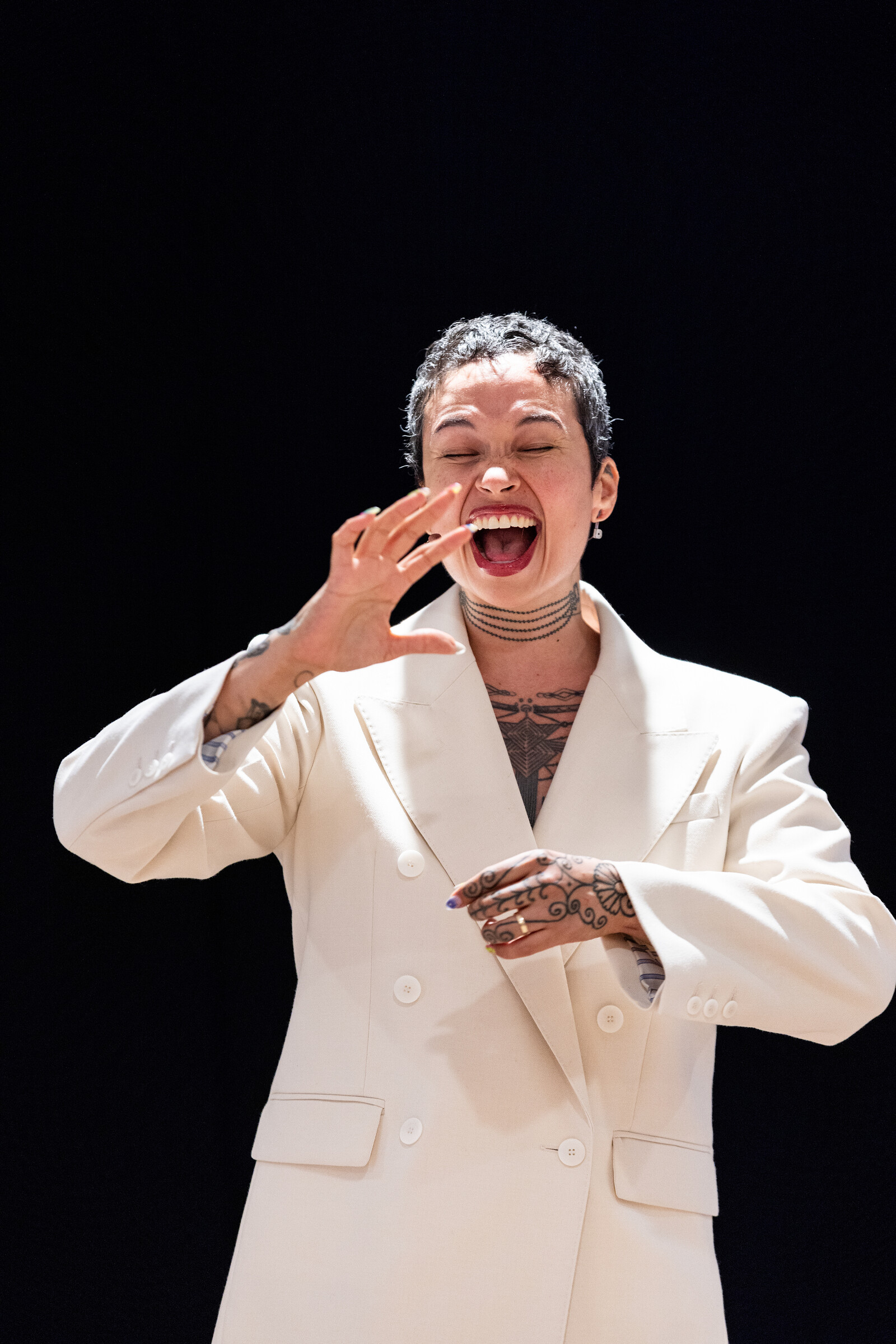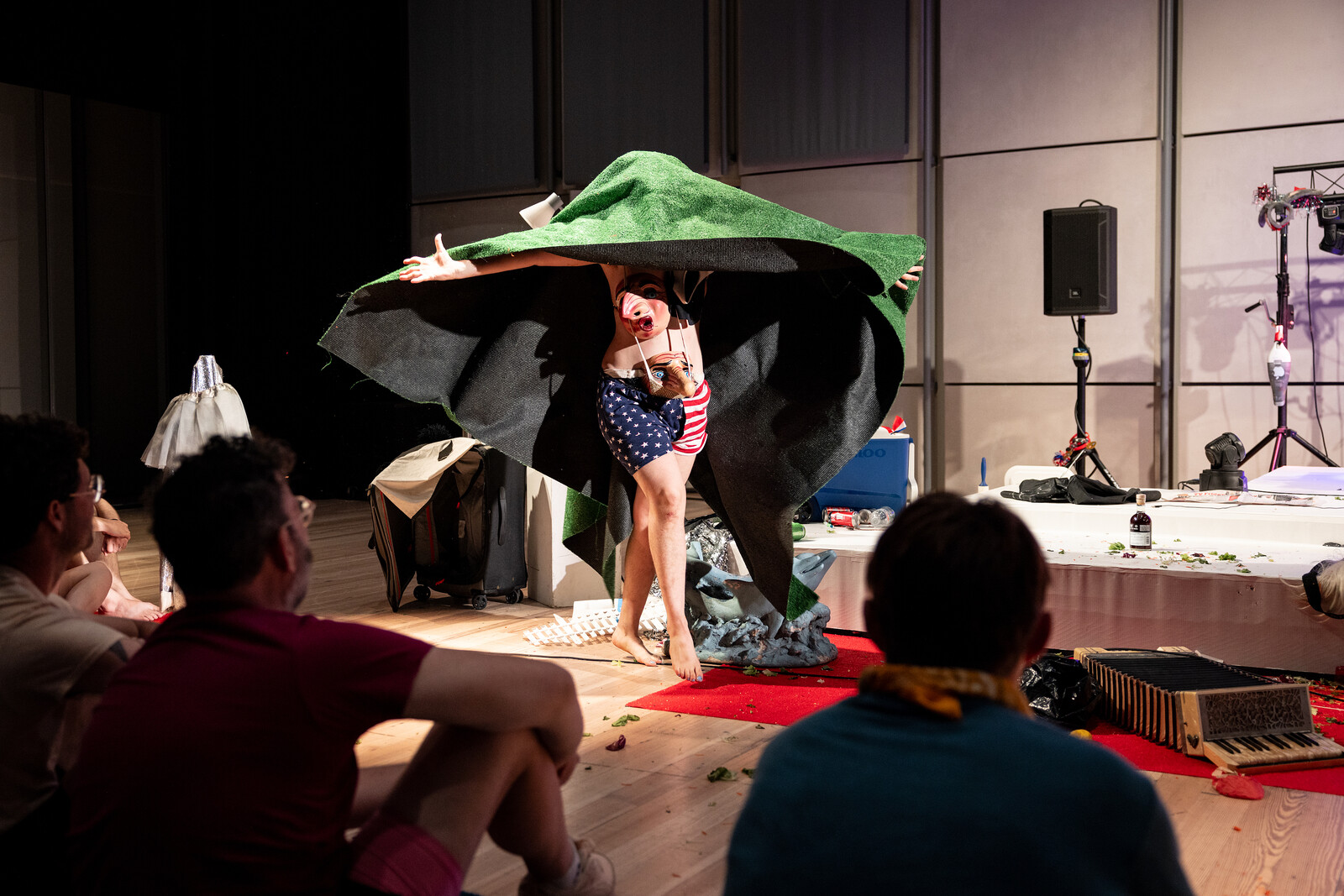Taja Cheek—currently artistic director at Performance Space New York, and an artist in her own right as L’Rain—has long advocated for the inclusion of sound artists and musicians in the gallery space, as central figures rather than an entertainment vehicle to lure crowds. This year’s Whitney Biennial featured a five-part performance program, curated by Cheek, featuring an array of performances deeply rooted in sound. Artists Debit, Sarah Hennies, Holland Andrews, Alex Tatarsky, and JJJJJerome Ellis presented electronic music, improvised sounds, an experimental music ensemble, and a sonic exploration of language.
The program began with Debit, playing music from her album The Long Count (2022), which imagines the music of the Mayan civilization through a theatrical and fantastical three-act performance, using intense drone sounds and samples of precious and eerie wind instrumentation. The stage consisted of a mountain made out of a pile of dirt/wood, spot lights and a curtain that was lifted at the end of the show to unveil the Whitney’s majestic view of the Hudson River, alluding perhaps to a call for the land. Debit used synthesizers which, according to the press release, “have sampled and processed the sounds of Late Postclassic Maya wind instruments. Using tones from an ancient culture and of-the-moment technologies, the performance shuttles the distant past into our contemporary artistic universe.” This use of machine-learning is in line with Holly Herndon and Mat Dryhurst’s program Spawning, to which you can feed your own voice as training data, and it can sing it back to you. Herndon and Dryhurst are represented in the central exhibition of the biennial (in the form of several images from their AI project xhairymutantx, 2024) but were not included in the performance program.
Another work that engaged with identity-based questions was Alex Tatarsky’s performance, though rather than addressing a broader societal issue, Tatarsky offered a manic, introspective exploration. While Tatarsky was accompanied by a musician, their piece stood out from the rest by its focus on the body as a performance vehicle. Dressed up as a clown, Tatarsky presented what they described as a “stand-up comedy” coming from a “place of rage,” invoking the frustration of sitting through bad comedy. They accomplished their goals pretty quickly, with half of the audience appearing visibly irritated and confused, while others were really engaged, particularly during their crowd work, which involved clapping, props, and banter. Their exhibitionist and hedonistic sexuality was a central theme, interwoven with references to Catholicism, childhood, and dom/sub-culture. Perhaps the performance was chosen by Cheek as a nod to the curator’s brief association with the art amusement park Luna Luna and the recent rise of clown-culture in New York, including the Clown Cult show in Brooklyn which gathers dozens of clowns twice a month. Yet this particular show felt disconnected from the program at large due to its navel-gazing nature.
The outstanding work of the series was the closing performance by JJJJJerome Ellis, in which he guided a small audience on an intimate and idiosyncratic tour of the biennial.1 Ellis read the wall texts aloud, and shared thank-you letters that he has written to each artist, expressing his gratitude for the insights their work had provided him. He walked us through works by Holland Andrews, Ser Serpas, Suzanne Jackson, K.R.M. Mooney, B. Ingrid Olson and ektor garcia, interacting with them through his saxophone, synthesizer, hammered dulcimer, singing, and occasionally dancing. Elllis reflected on the precision and care that went into ektor garcia’s hanging sculptures of crochet copper-wire, reminding him of the way his grandmother used to sew clothes. Striking and plucking the strings of the hammered dulcimer, not always in tune, Ellis sang an intimate song to us that he used to sing to his grandmother. The performance-tour was genuine, enticing, playful and even absurd at times. By intertwining his own sound and movement with the pre-existing works, Ellis introduces a novel perspective that challenges, and extends, what the original artist, as well as the biennial curators, intended.
For our review of the central exhibition of the 81st Whitney Biennial, see https://www.e-flux.com/criticism/599131/81st-whitney-biennial-even-better-than-the-real-thing.
